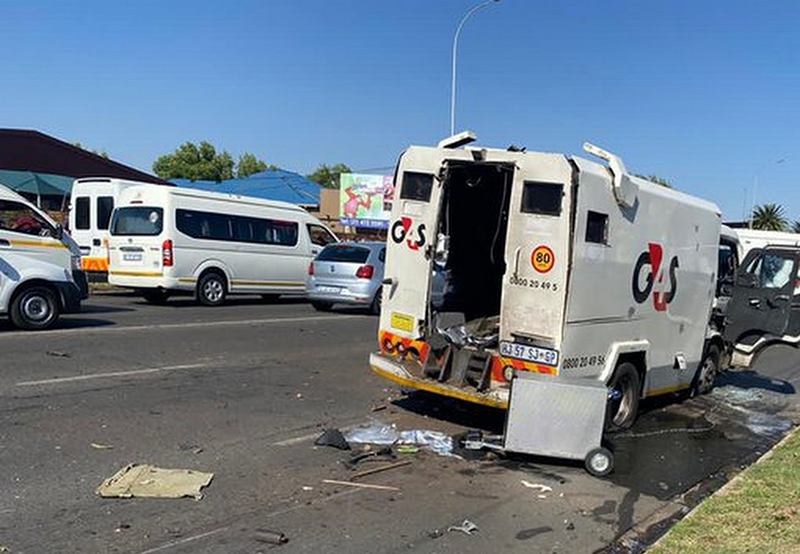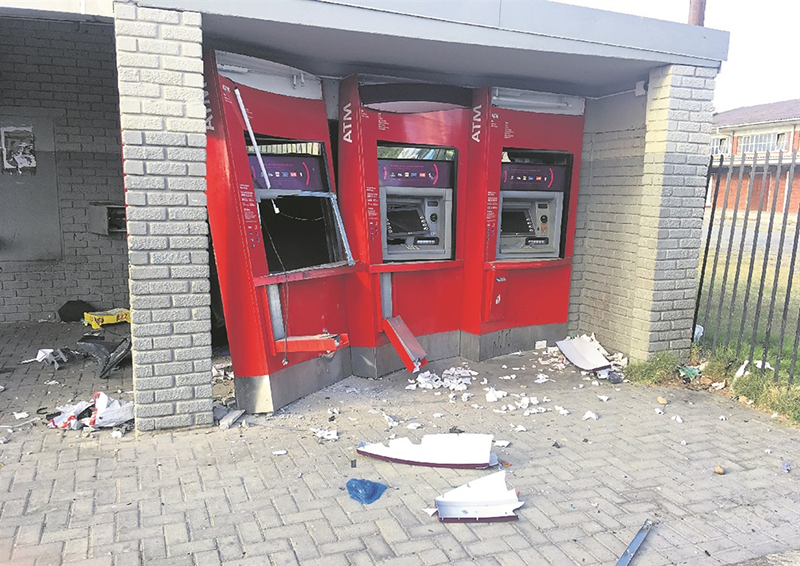- Featured
- No Comment
IN-DEPTH: Explosives-based crime costs SA economy billions of rand; syndicates smuggle them from Zimbabwe

By Business Day
SOUTH AFRICA: Smuggled explosives and blasting experts imported by criminal syndicates have become key enablers of the rash of cash-in-transit (CIT) heists, ATM bombings and even illegal mining operations that are testing the police to their limits.
With more than one armoured car heist and more than one cash machine bombing somewhere in the country every day, and with illegal mining becoming ever more sophisticated, the loss to the economy runs easily into tens of billions of rand a year.
A little more than 200 dedicated explosives inspectors enforcing antiquated laws hold the line against the syndicates, with insufficient resources, training and intelligence gathering further bedevilled by widespread corruption among police officers and prosecutors.
As a major mining country, SA consumes more than 300-million tonnes of commercial explosives a year, some batches of which are skimmed — especially by miners already working deep underground — to divert to a diverse array of crime syndicates.
But demand from the syndicates is so high that they have to smuggle in explosives, detonators and even qualified blasters, especially from explosives manufacturing countries such as Zambia and Zimbabwe.
Veteran police bomb disposal expert Willem Els, who now works for the Institute for Security Studies training the likes of police commissioners of the Southern African Development Community (Sadc), says CIT heists provide the blueprint of how various organised crime syndicates collaborate in the use of explosives.
Els was speaking at an invitation-only conference on transnational organised crime run by Johannesburg-based research and advocacy nonprofit Good Governance Africa. He had previously done the same presentation for the AU.

18 to 24 months planning each heist
CIT robberies provide, he says, “a carbon copy of how organised crime works: if you look at how the different organised crime syndicates work together, the one syndicate smuggles explosives, the other syndicate’s got the firearms that they either sell or they rent, the other one specialises in supplying the blasters, coming in from across the border from one of our neighbouring countries … contracted by the [CIT] syndicate,” and then a range of specialists such as snipers are also drawn in.
Former policeman Hennie Lochner’s 2020 book, Transito, on CIT heists, is based on interviews with 27 convicted robbers. He found that they spend 18 to 24 months planning each heist. They are assisted by a cherry-picked network of police informers, cash-transit company insiders, cellphone technicians and car thieves.
“These guys are very meticulous in their planning,” Els admits. They place spotters to observe the helipad of the anti-syndicate police Special Task Force in Pretoria. If any movements are noted, the planned heist is called off.
“They don’t have to go through our procurement as police to get a common laptop, or to get new technology …
“They embrace technology, they use it, and they can afford it, where we have to go through all these procedures and we have a [limited] budget.”
The planning pays off as the average CIT robbery nets R1.8m, according to the SA Banking Risk Information Centre (Sabric), a joint anti-crime initiative of the banking sector, though with more than R1bn taken from 2008 to 2016 only in heists where explosives were used to crack open armoured cars, Sabric’s last annual crime stats report contains no mention of CIT robberies.
But the report does note: “Despite the deployment of dye-stain technology, ATM explosive attacks surged by 23% in 2022, posing persistent challenges in the prevention of these high-risk criminal acts.”

Here, the figures are up to date: Sabric members reported a 57% success rate where explosives breached the ATM safe, bombers making off with R32.7m in cash, the bulk of the R45.2m stolen from ATMs last year. That is up dramatically from R28.5m in 2021.
Els says ATMs are usually cracked by gangs using only 150g-200g of explosives, usually ammonium nitrate cartridges as used in blast-holes in mining, set off by a tiny quantity of high-explosive detonators. ATM bombers tend nowadays to use nonelectric “shock-tube” detonators, which are more stable and do not require hard-to-get electronic firing mechanisms.
Yet the transporting of illicit explosives and detonators into SA and its secret storage here remains extremely risky because highly sensitive detonators, most often electrically fired detonator cords, and the more stable main charges are often carelessly smuggled and stored together.
Women with children, chosen for their innocence and the sympathy they evoke, are often employed to unwittingly transport a case bearing up to 50kg of explosives and perhaps 1,500 detonators together, across the Beitbridge border post from Zimbabwe or across the Limpopo River’s porous border, Els notes.
Then they will board a bus or taxi crammed with unaware passengers, and undertake the perilous journey to Benoni, East Rand, which is the primary “depot” for the explosives syndicate.
“From there the cash-in-transit robbers will come and source their explosives, or the ATM bombers will come, or the zama zamas will come.”
This makes the explosives syndicate the key nexus of three criminal enterprises, with tentacles as far afield as Uganda and India.
Hearse driver
Transnational truck drivers are also induced to insert packages of explosives into their cargoes.
In July 2020, a hearse driver was stopped at Beitbridge carrying four spools of detonator cord, together with a backpack-sized load of explosive cartridges, worth a total of R700,000.
“It’s very lucrative,” says Els.
Zama zama mining syndicates are responsible for the theft of R7bn-R21bn a year in gold alone, before one even talks of diamonds, platinum, or chrome. Els says the wide disparity in the figures is because police simply do not have the manpower or sufficient information for an accurate estimate.
Hope lies, says Els, in getting all relevant Sadc authorities together and “developing a regional explosives control protocol for all the countries, whether from police or department of mines [plus] the harmonisation of legislation and regulations for the region”.
